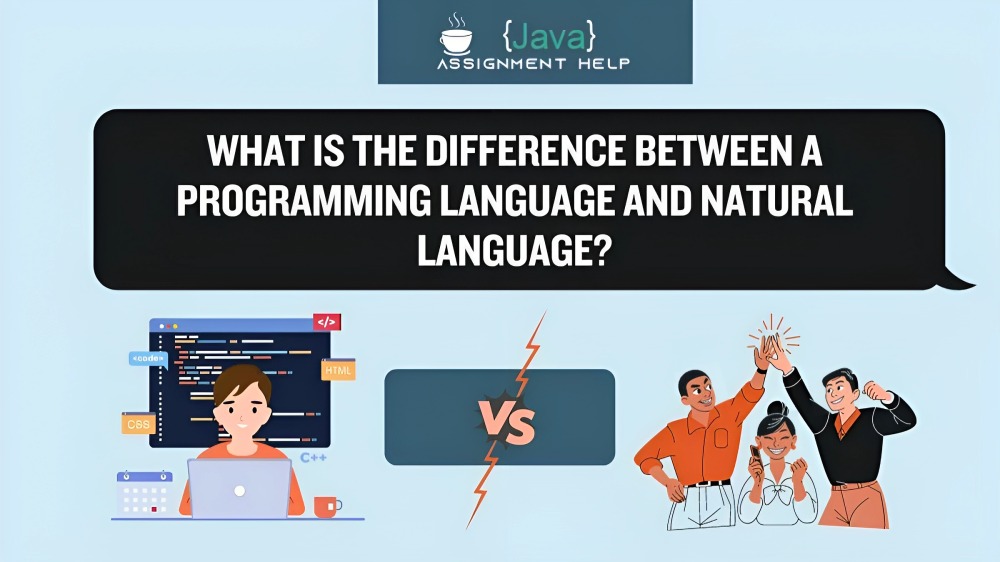Natural Language:
Natural language refers to the diverse range of languages used by humans for everyday communication, both spoken and written. It encompasses languages spoken globally, such as English, Spanish, Chinese, Arabic, Programming Language, and numerous others, each with its own dialects, variations, and cultural nuances.
Key characteristics of natural languages include:
Diversity: Thousands of natural languages are spoken worldwide, reflecting the cultural diversity and regional variations among different communities.
Expressiveness: Natural languages are versatile, enabling individuals to convey a wide array of thoughts, emotions, ideas, and information through various linguistic mechanisms like grammar, vocabulary, idioms, and intonation.
Complexity and Ambiguity: Unlike programming languages, natural languages often have ambiguity, context dependency, and multiple interpretations. They can convey abstract concepts and subtleties that require contextual understanding.
Human Communication: Natural languages are used for interpersonal communication, enabling people to express themselves, engage in conversations, tell stories, ask questions, and share knowledge among each other.
Programming Languages:
Programming languages serve as the essential means of communication between humans and computers, allowing individuals to convey instructions in a structured format that machines can understand and execute.
Key characteristics of Programming languages include:
Some key aspects of programming languages include:
Structured Communication: Programming languages provide a systematic way to convey commands and algorithms to computers, defining sequences of operations to perform specific tasks.
Instructions (Code): Code, written in programming languages, consists of commands, functions, and algorithms that direct computers on what actions to perform. These instructions adhere to specific syntax and rules dictated by the programming language.
Problem Solving and Automation: Programmers use programming languages to solve complex problems, automate tasks, manipulate data, and develop software applications tailored to various needs.
Diversity and Specialization: There’s a wide range of programming languages, each with its unique features, strengths, and areas of application. For instance, Python is renowned for its simplicity and versatility, while C++ is often used in system programming and game development.
Applications and Development: Programmers leverage programming languages to create diverse software, ranging from web applications, mobile apps, and desktop software to sophisticated systems like artificial intelligence (AI), machine learning (ML), and databases.
Learning and Understanding: Learning a programming language involves grasping its syntax, semantics, logic, and principles. It’s akin to learning a new language, requiring practice, problem-solving skills, and a deep understanding of its constructs and paradigms.
In essence, programming languages serve as the foundation for creating software and technological solutions, empowering developers and engineers to transform ideas into functional systems that cater to various needs across different industries and domains. Mastering programming languages enables individuals to effectively communicate with computers and unlock their potential to solve problems and innovate.
Difference between Programming Languages and Natural Languages:
The contrast between programming languages and natural languages is a fascinating aspect of human communication and technological advancement.
These two types of languages play crucial roles in distinct domains, each with its own set of characteristics and purposes.
Understanding the disparity between programming languages and natural languages helps highlight their roles in technology and human communication, showcasing their respective impacts and contributions to society and innovation. Both types of languages play integral roles in shaping our modern world in their distinct ways.
The primary differences between a programming language and a natural (everyday) language lie in their purpose, structure, and usage:
Purpose:
Programming Language: Programming languages are designed for instructing computers to perform specific tasks. They consist of syntax, rules, and instructions used to write code that a computer can understand and execute.
Natural Language: Natural languages (e.g., English, Spanish, etc.) are used for communication between people. They are versatile and expressive, allowing for complex ideas, emotions, and nuances to be conveyed.
Structure:
Programming Language: Programming languages have strict syntax and rules that must be followed precisely to create executable code. They are highly structured and unambiguous, requiring specific instructions to perform tasks.
Natural Language: Natural languages have varied structures, grammar, and rules, but they often include ambiguity, context dependence, and multiple interpretations due to their expressive nature.
Usage:
Programming Language: Programming languages are used by developers and programmers to create software, applications, algorithms, and systems that enable computers to perform specific functions or tasks.
Natural Language: Natural languages are used for everyday communication among individuals, conveying thoughts, ideas, emotions, stories, instructions, and more.
Communication Target:
Programming Language: The target audience of programming languages is the computer itself. The instructions written in a programming language are aimed at guiding the computer’s behavior.
Natural Language: Natural languages are used for communication between individuals, conveying information and understanding among people.
Expressiveness:
Programming Language: Programming languages are precise and focused on specific tasks. They lack the expressive flexibility and ambiguity found in natural languages.
Natural Language: Natural languages are highly expressive and adaptable, allowing for the conveyance of a wide range of ideas, emotions, and concepts.
Conclusion:
In summary, programming languages are structured systems used to provide instructions to computers, while natural languages are versatile means of communication between people, allowing for expression, interpretation, and understanding of various concepts and emotions.
Also, Read More About – Your Organization’s Data Cannot be Pasted Here.

